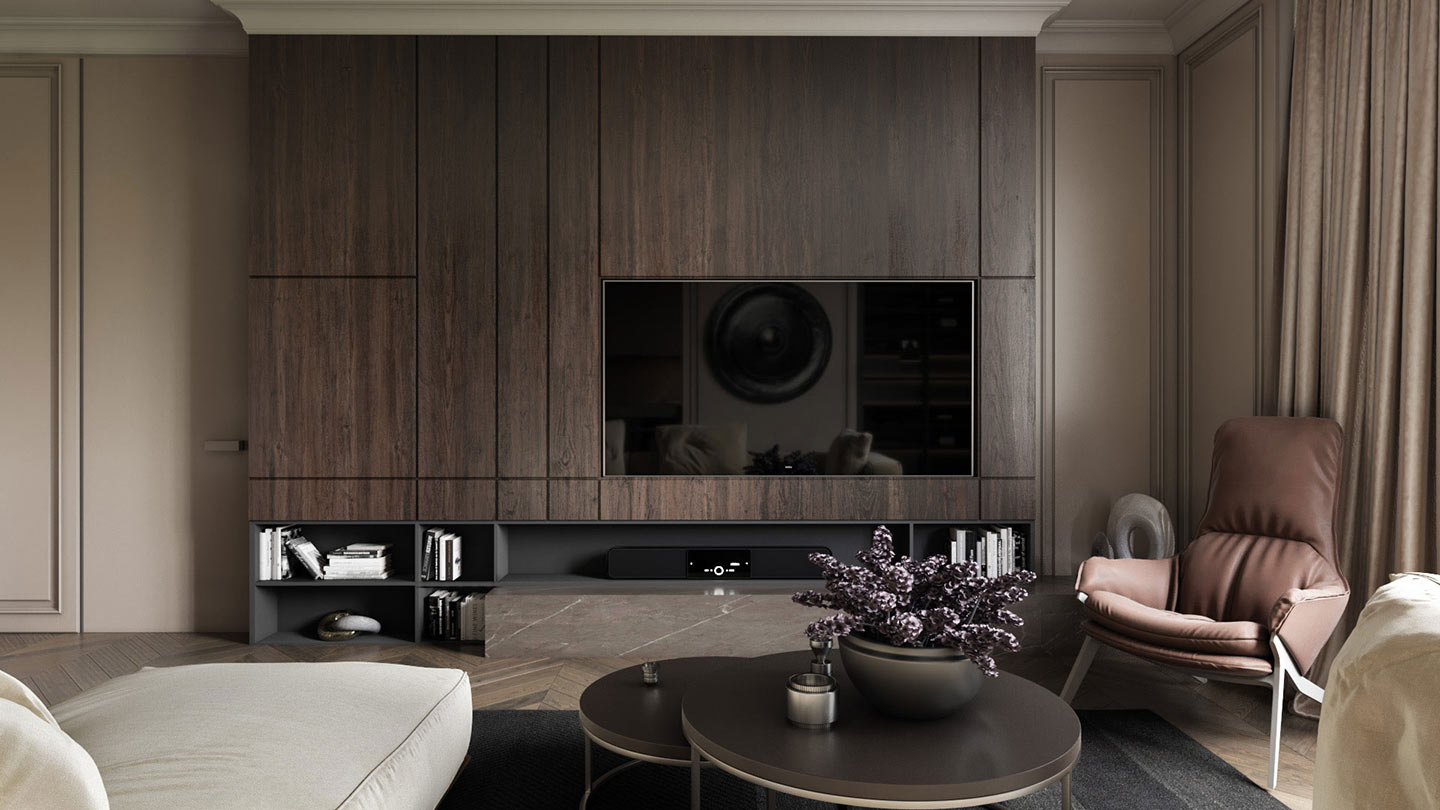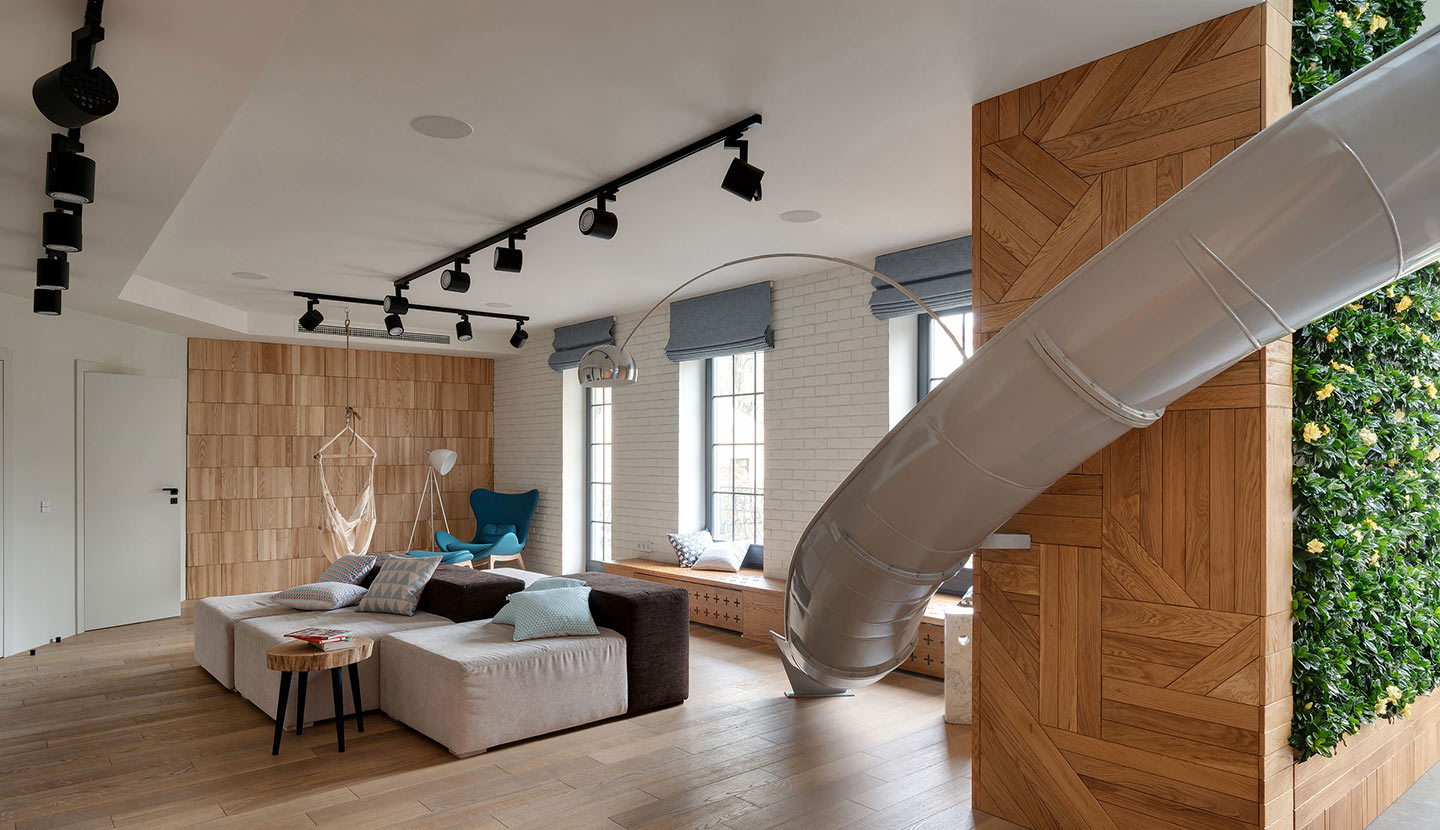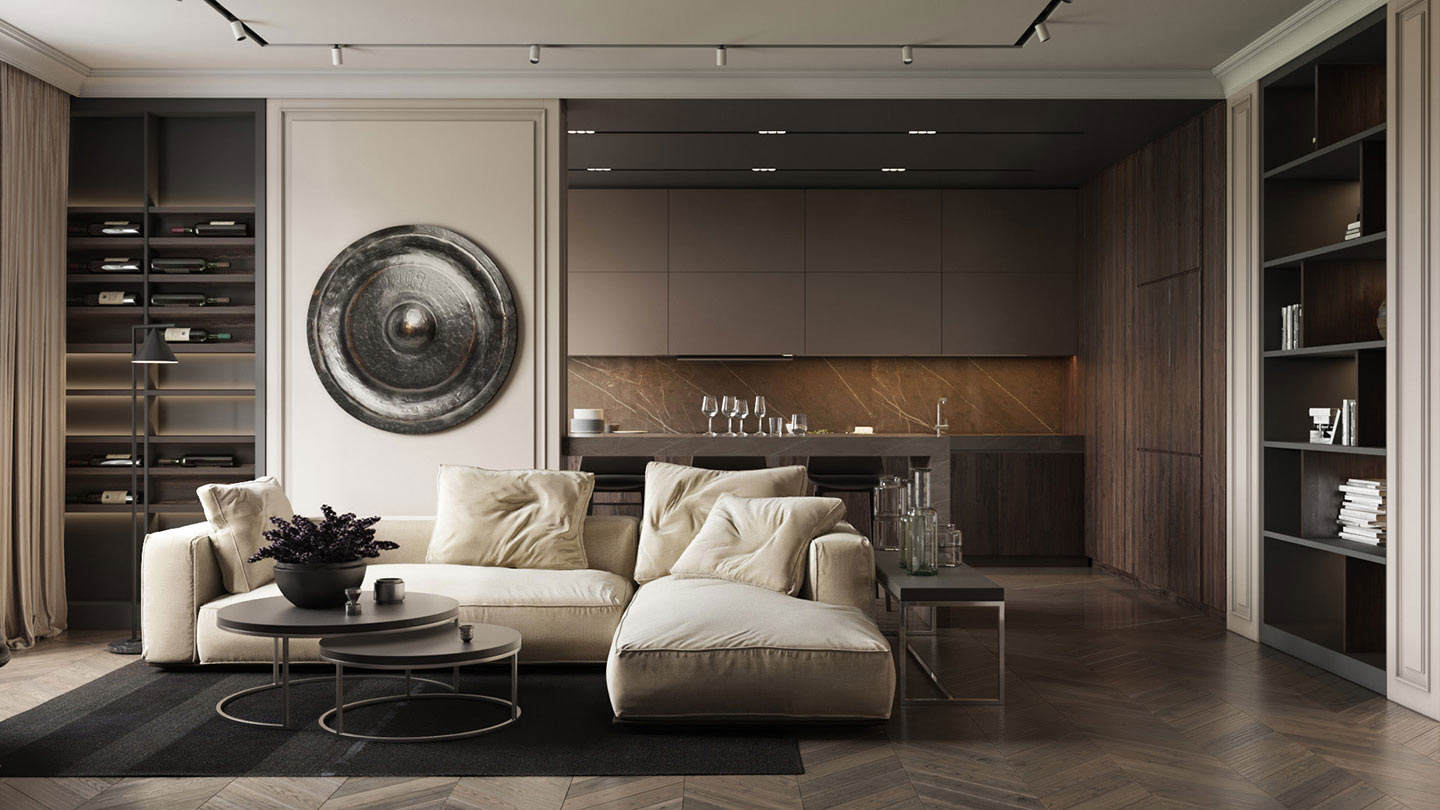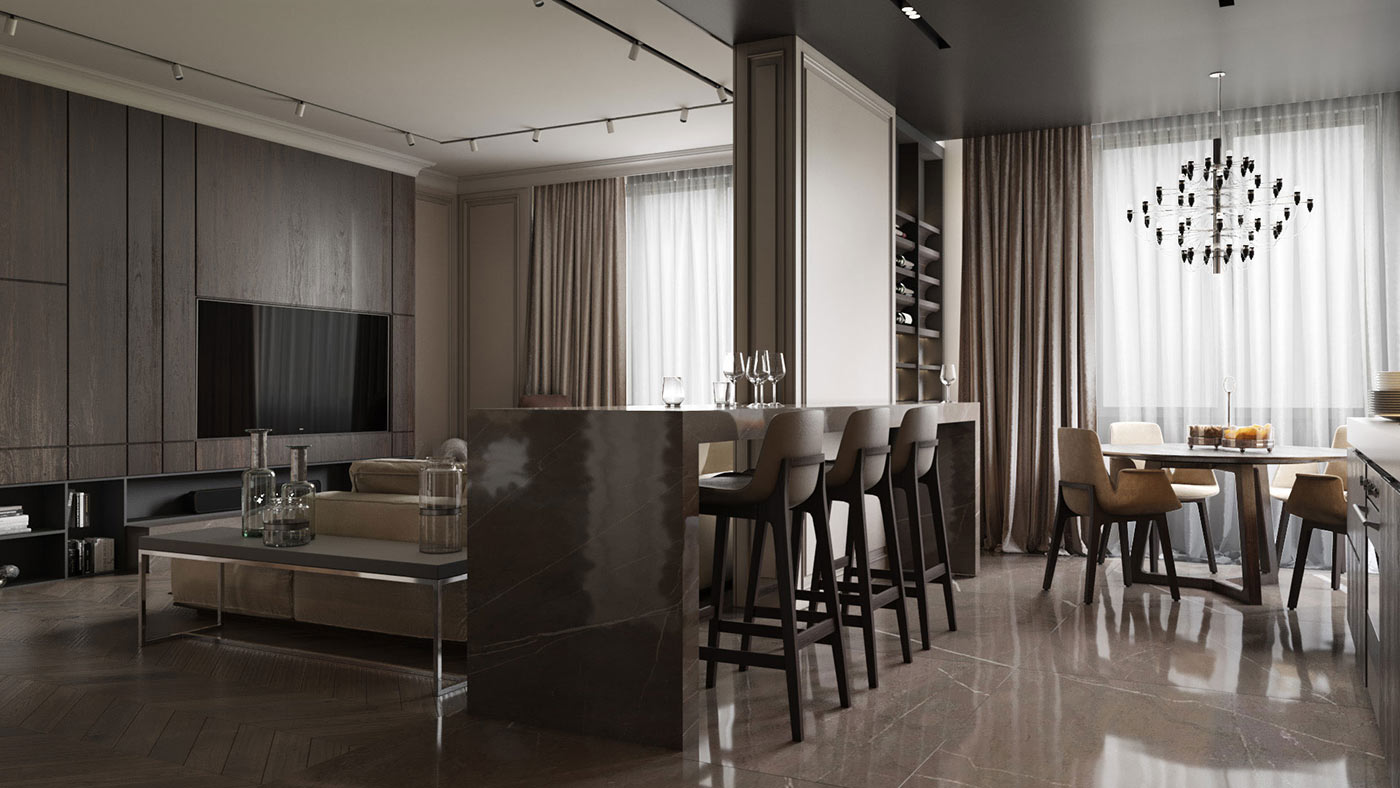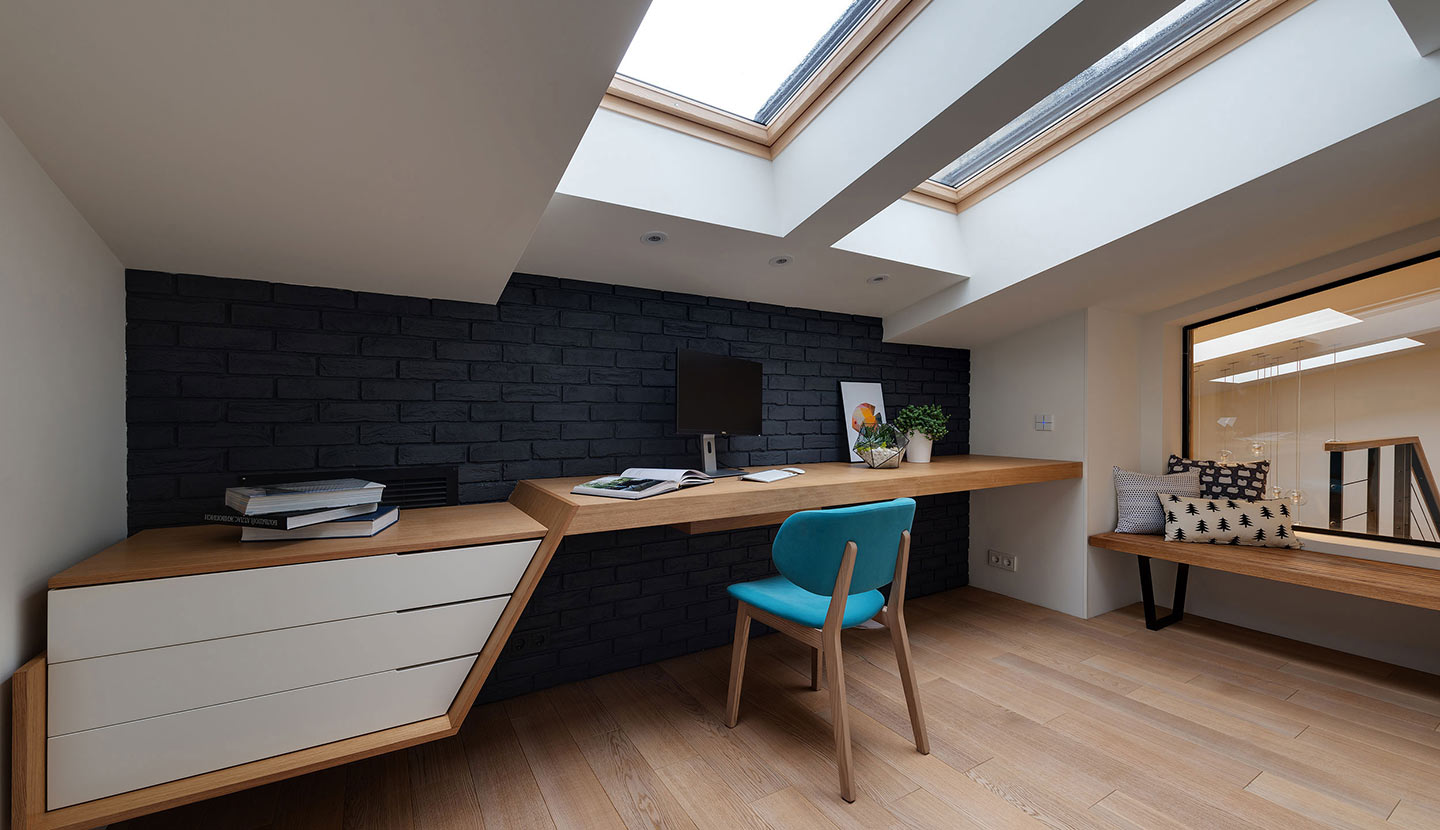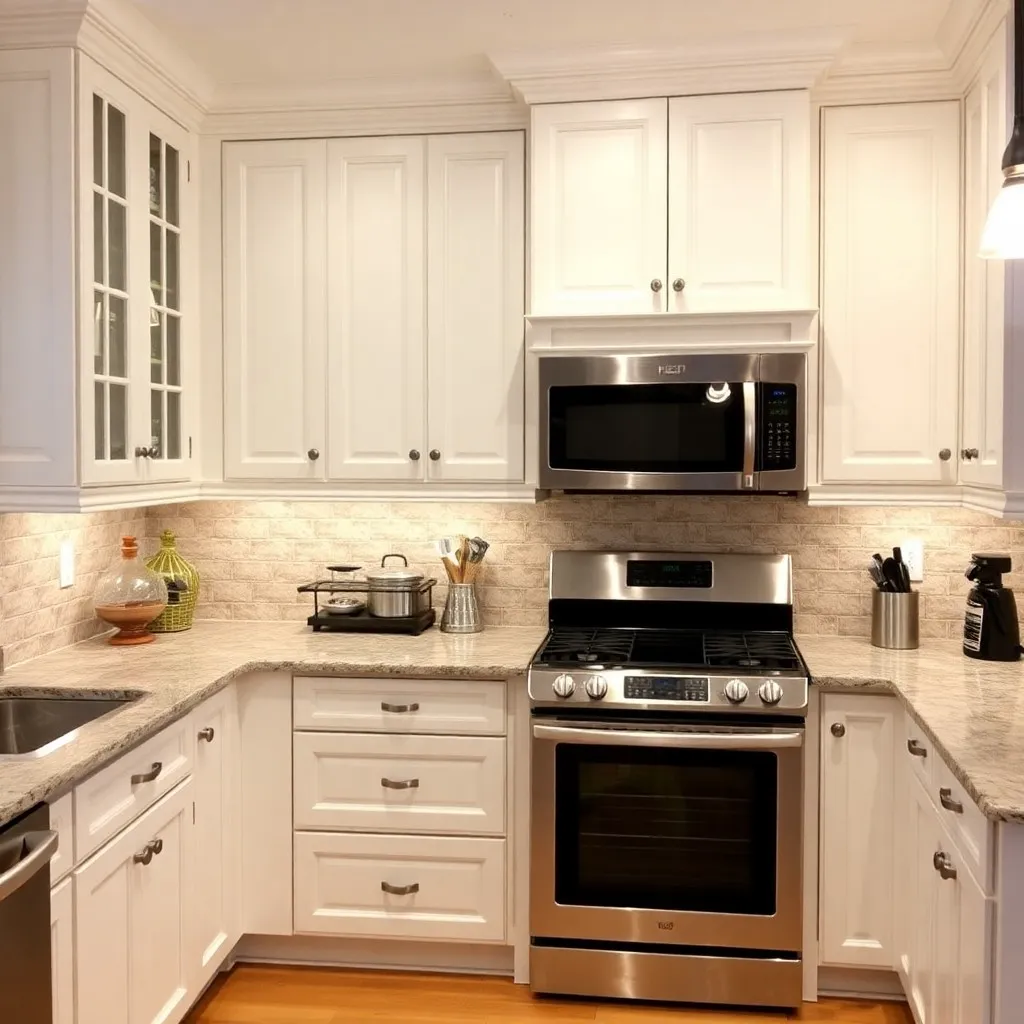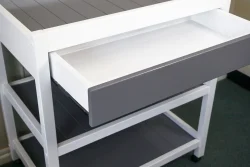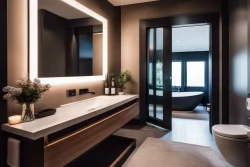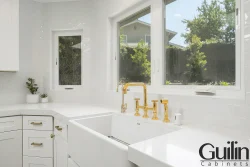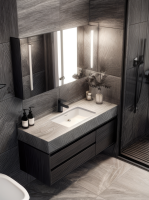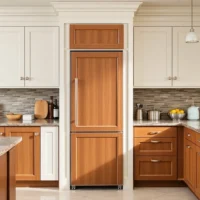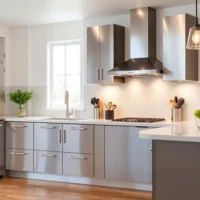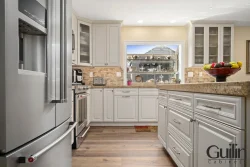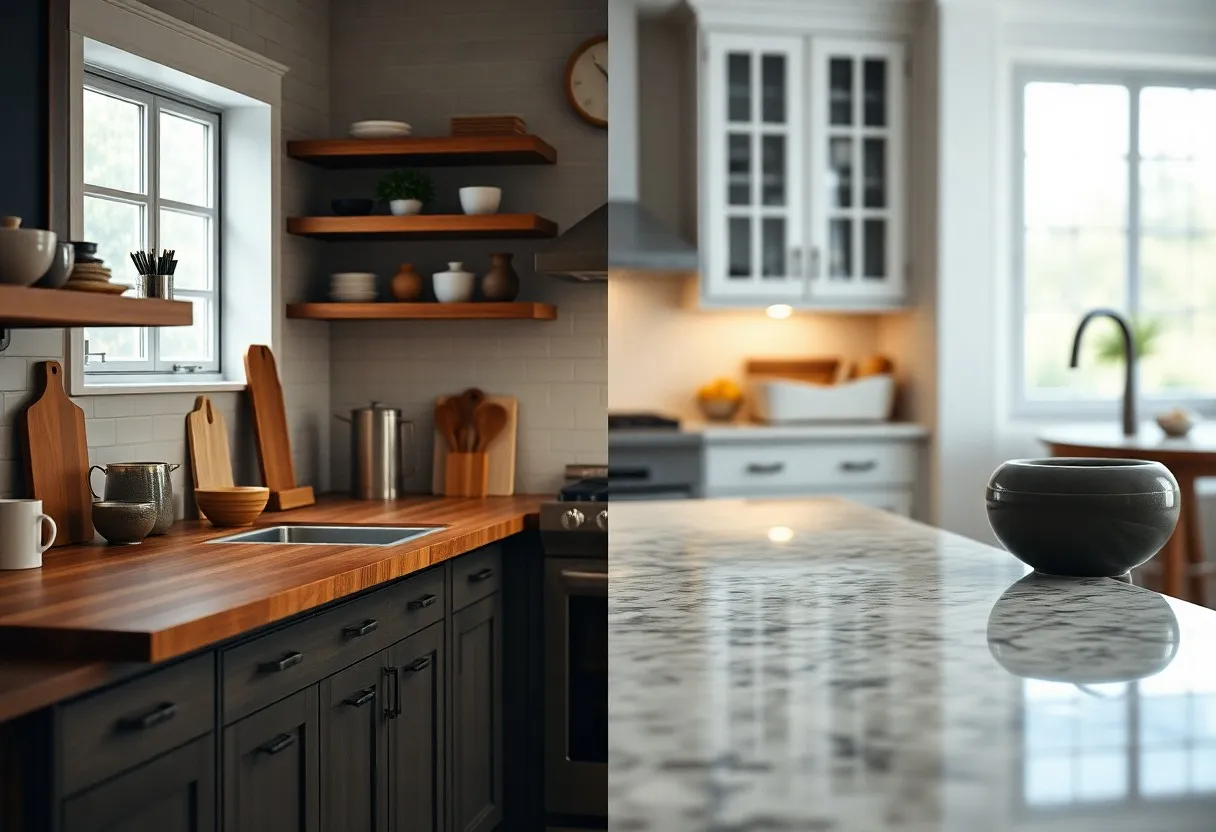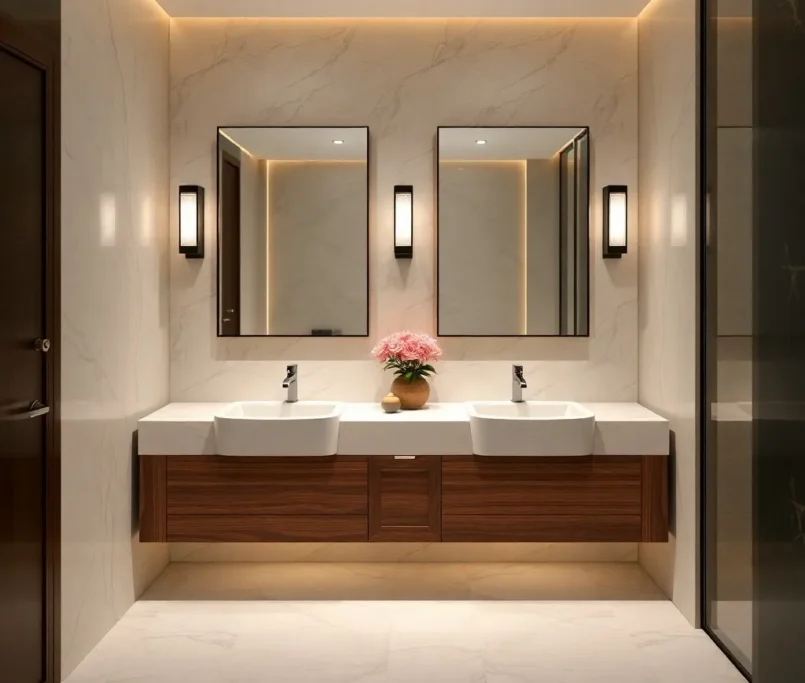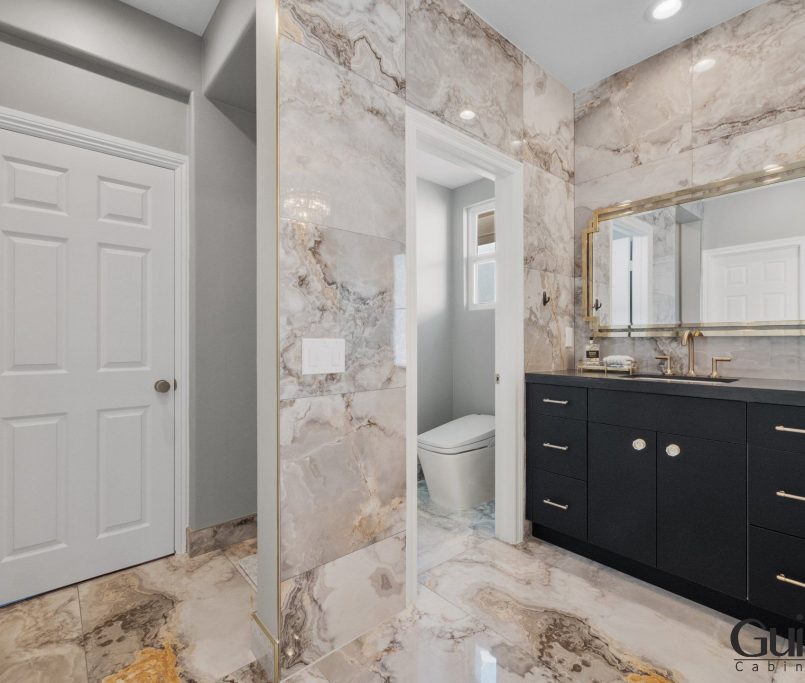Over time, your choice of granite countertop grade can significantly impact the overall appearance and functionality of your kitchen or bathroom. In this guide, you will learn how to identify varying levels of quality, from low to high grade, and understand the factors that contribute to their assessment. By gaining insight into aspects such as visual appearance, durability, and porosity, you can make informed decisions that not only suit your budget but also enhance your home’s value and aesthetic appeal.
Overview of Granite Countertops
The granite countertop has gained popularity in both residential and commercial spaces for its durability, aesthetic appeal, and practical functionalities. As a natural stone, granite is mined from quarries, cut into slabs, and polished to create stunning surfaces that enhance your interiors. With a wide variety of colors, patterns, and finishes available, granite can be tailored to suit any design preference from classic to modern aesthetics.
About Granite?
Below, it is crucial to understand that granite is an igneous rock, primarily composed of quartz, feldspar, and mica. This composition not only gives granite its unique appearance but also contributes to its remarkable durability and strength. Granite is formed under intense heat and pressure within the Earth’s crust, making it an incredibly resilient material that can withstand the wear and tear of daily life.
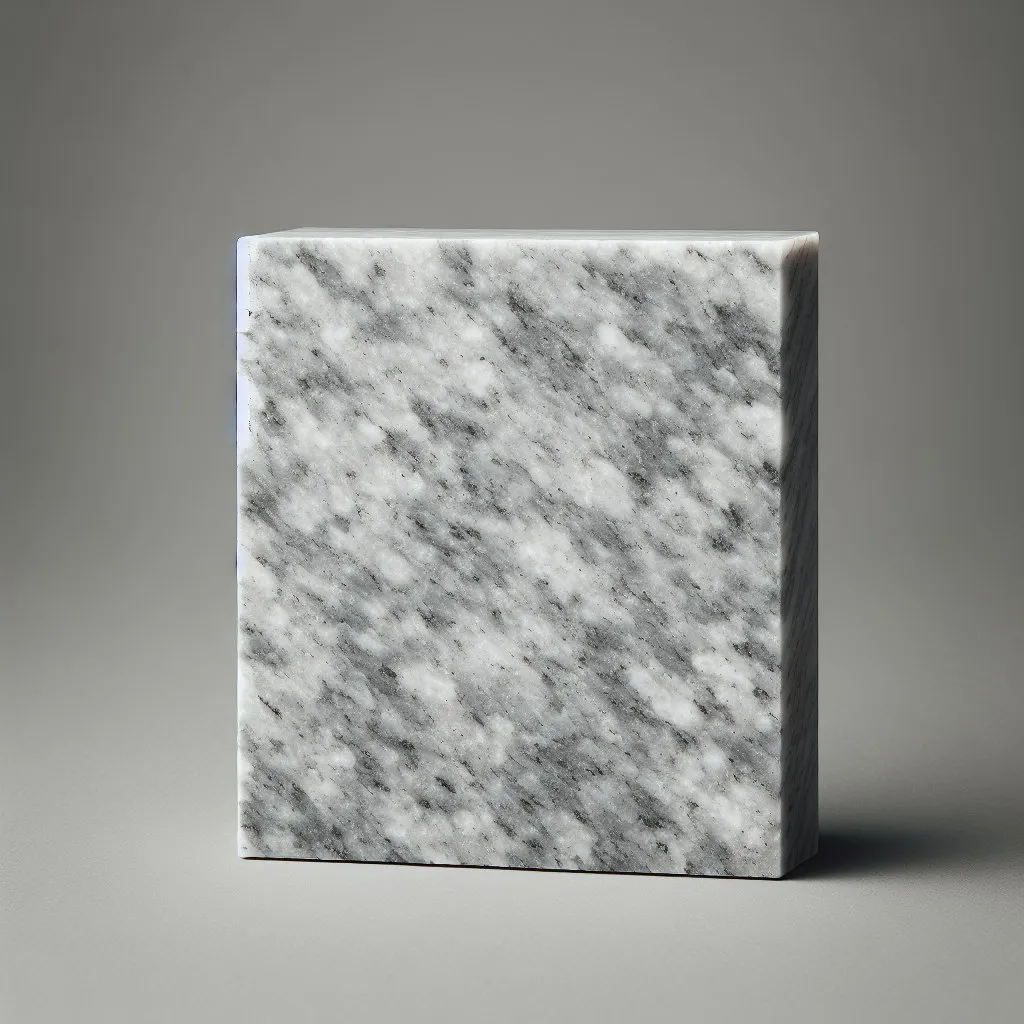
Additionally, the geological process that results in granite’s formation leads to a diverse range of colors and patterns, allowing you to select a piece that fits your personal style. Each slab of granite is one-of-a-kind, offering a unique character to your space.
Common Uses of Granite Countertops
One of the most common applications for granite is in kitchen and bathroom countertops. Its ability to withstand heat, scratches, and stains makes it an ideal choice for these high-traffic areas. Beyond countertops, granite is also used in flooring, backsplashes, and even outdoor patios, showcasing its versatility and durability in a variety of settings.

Countertops made of granite can elevate the functionality and aesthetic appeal of your kitchen or bathroom. They offer a dramatic focal point and can seamlessly integrate with various design themes. Granite’s commercial applications extend to use in restaurants, hotels, and retail environments, where durability and ease of cleaning are paramount.
Granite Grading System
It is important to grasp the nuances of the granite grading system if you’re considering investing in granite countertops for your home. This classification often categorizes granite into three main grades: low-grade (Level-1), mid-grade (Level-2), and high-grade (Level-3 and above). Each level reflects different qualities in terms of visual appeal, durability, and overall value. As you explore your options, understanding these grades will help you make an informed decision that aligns with your budget and aesthetic preferences.
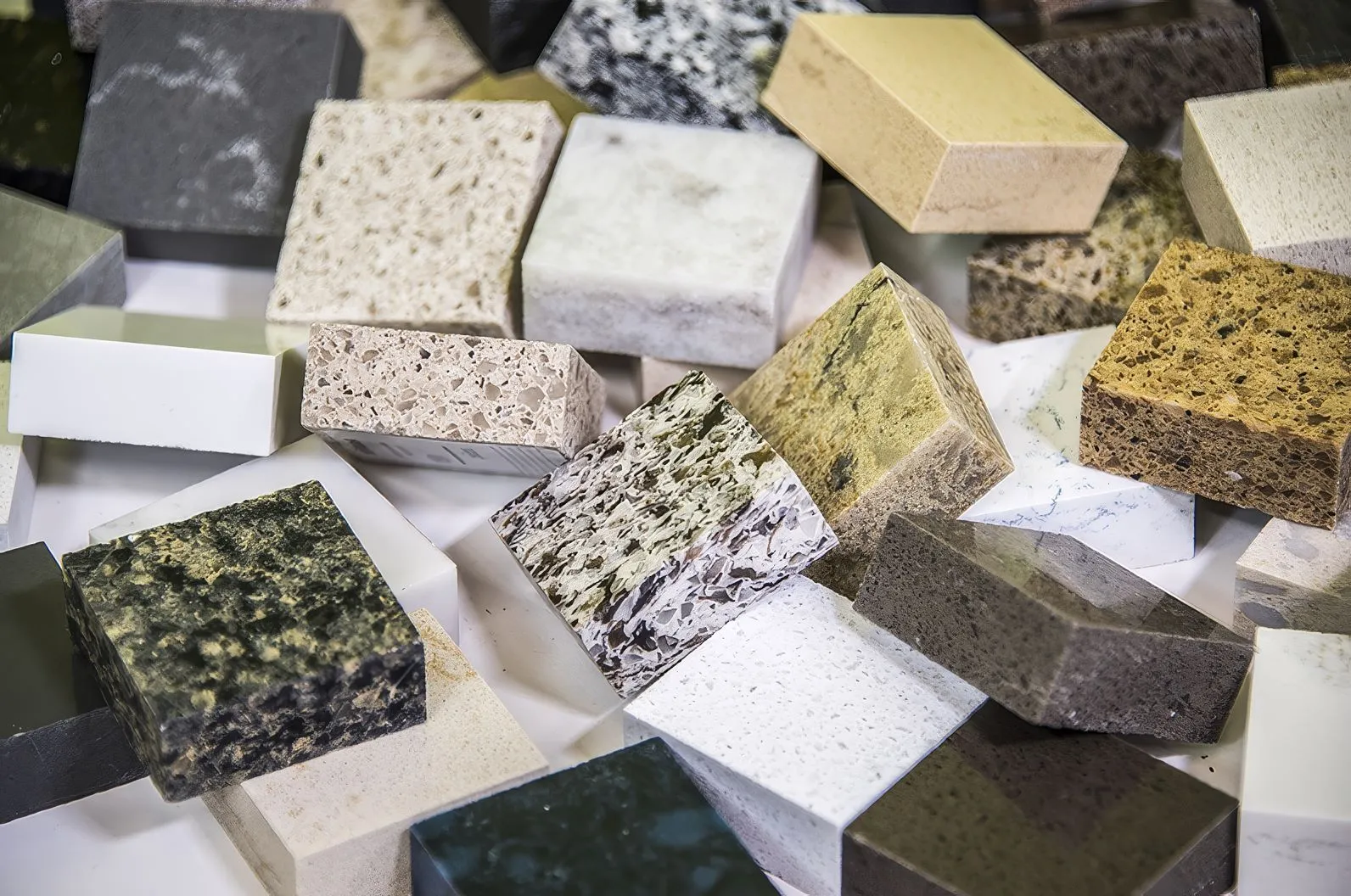
Low-Grade Granite (Level-1)
Low-grade granite, also called builder-grade or entry-level granite, is the most affordable and basic option. Here are its key features:
- Appearance: Often available in simple designs and common colors. Patterns may be less distinct or consistent.
- Thickness: Typically thinner slabs, often about 3/8 inch (10 mm), requiring plywood or support underneath for stability.
- Porosity: More porous compared to higher grades, meaning it may absorb liquids faster if not sealed properly.
- Use: Suitable for budget projects, rental properties, or temporary installations.
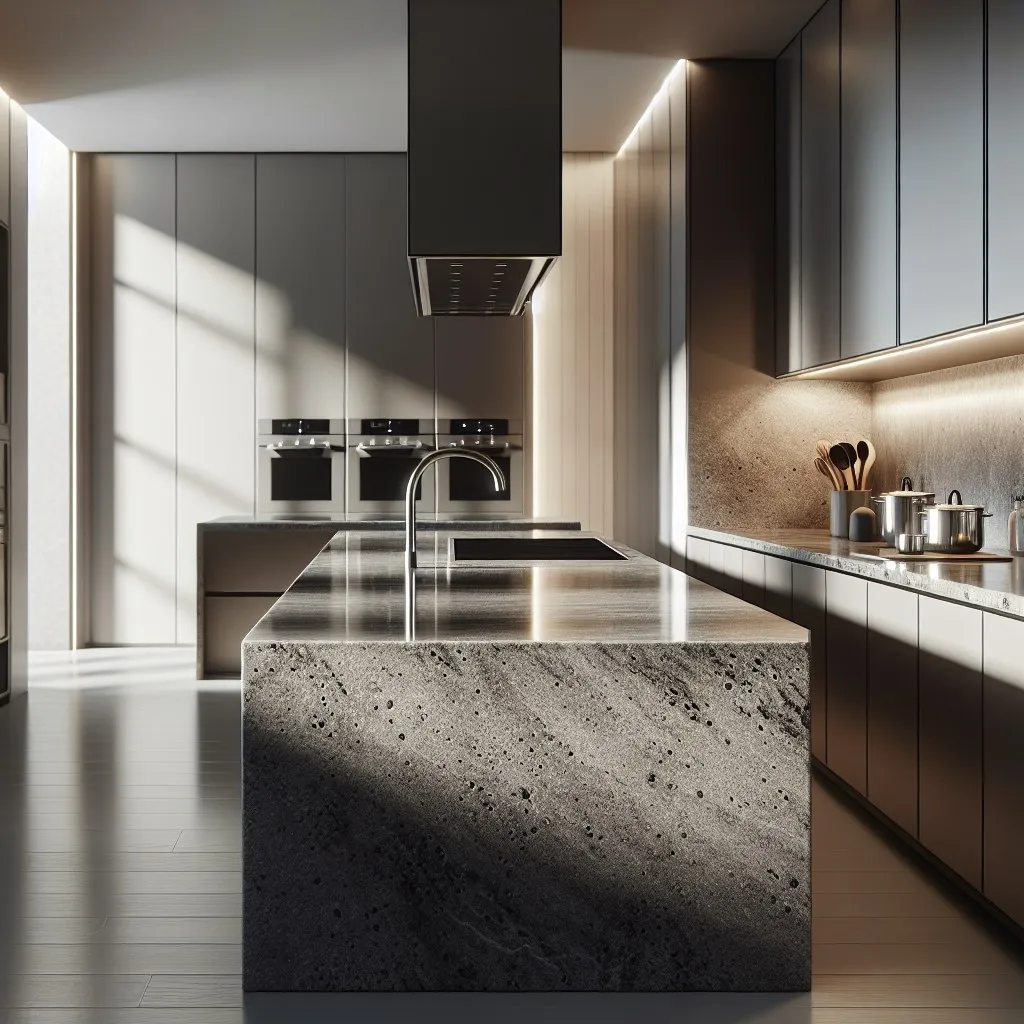
Characteristics of Low-Grade Granite
One of the defining characteristics of low-grade granite is its structure. Typically, these slabs are thinner than their mid- and high-grade counterparts, often measuring about 3/8 inch (10 mm). Because of this reduced thickness, low-grade granite usually requires additional support beneath it, such as plywood, to ensure stability and durability. Additionally, low-grade granite tends to be more porous, which increases the risk of absorbing liquids if not sealed properly.
Another significant feature of low-grade granite is its affordable pricing, which makes it suitable for short-term projects or rental properties where economic factors take precedence over longevity. Whether you’re upgrading a space temporarily or working on a quick remodel, low-grade granite provides a cost-effective solution.
Visual Appearance
Any countertop choice is often influenced by aesthetics, and this is where low-grade granite exhibits some limitations. These surfaces typically offer simple designs and common colors, making them less distinct or unique compared to higher-grade options. Patterns in low-grade granite may appear inconsistent, lacking the vibrant and intricate veining you might find in mid- or high-grade varieties.
Low-grade granite may not have the eye-catching elements that help accentuate your kitchen or bathroom, but it can still serve its purpose. If you’re working with a modest budget and prioritize functionality over style, low-grade granite can still provide an adequate surface for your needs.
Cost Implications
Low-grade granite is highly appealing primarily due to its cost. Being the most affordable type of granite, it is perfect for those working on a tight budget. However, it is vital to keep in mind that while the lower initial costs might seem enticing, factors such as installation and the need for protective sealing can affect long-term expenses.
When considering the financial side, low-grade granite is often marketed as a bargain option. However, users should weigh the potential need for replacements or repairs due to its higher porosity and susceptibility to damage. This cost analysis can help you make a well-informed decision that aligns with your overall remodeling budget.
Ideal Uses and Applications
Above all, low-grade granite serves specific applications effectively. It is commonly used in budget projects, such as rental homes or temporary installations. In these scenarios, the focus is typically on cost-effectiveness rather than on longevity or aesthetics. Therefore, you might find low-grade granite in less frequently used areas like laundry rooms or garages where wear and tear are not as critical.
Low-grade granite can be used in various practical applications, including home offices, outdoor kitchens, and dining areas prioritizing functionality over style. The affordability and basic utility of low-grade granite make it a suitable choice for homeowners looking to meet their needs without overspending.
Mid-Grade Granite (Level-2)
Mid-grade granite strikes a balance between cost and quality. It offers more variety in appearance and durability:
- Appearance: Features more distinct patterns and a broader range of colors. The veining and designs are often more intricate.
- Thickness: Slabs are usually thicker, about 3/4 inch (20 mm), which adds durability and a premium feel.
- Durability: Less porous than low-grade options, making it more resistant to stains and water damage.
- Use: Popular for residential countertops and home improvement projects.
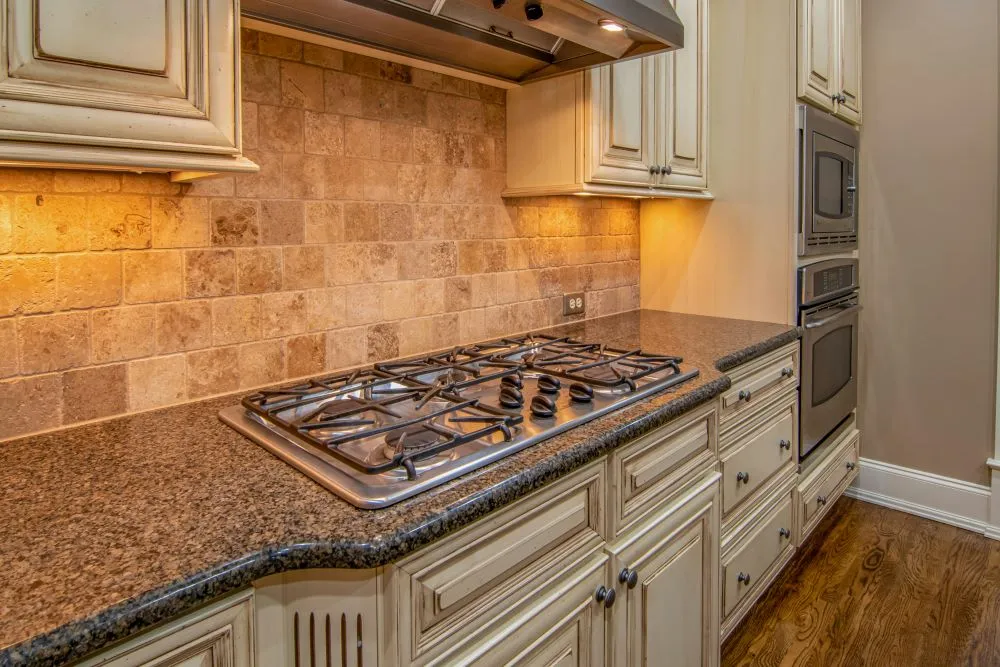
Characteristics of Mid-Grade Granite
About mid-grade granite, it often strikes an optimal balance between cost and quality. You’ll find that this granite type not only provides enhanced visual interest but also maintains a level of durability suitable for everyday use. The thickness of these slabs adds to their robustness, allowing for easier installation and a longer lifespan compared to thinner, low-grade alternatives.
Visual Appearance
An imperative feature of mid-grade granite is its visual appeal. The slabs in this category typically boast more distinct patterns and a wider range of colors than their low-grade counterparts. You’ll appreciate the intricate veining and designs that can add a touch of sophistication to your space, making this granite perfect for various design aesthetics.
Considering the importance of visual impact in your home, mid-grade granite offers a variety of stunning options that can complement your design vision. You may find unique color combinations and patterns that align beautifully with your personal style, which can significantly elevate the overall look of your interiors.
Durability and Maintenance
Among the many advantages of mid-grade granite is its durability. Less porous than low-grade varieties, this granite is more resistant to stains and water damage, allowing you to enjoy your countertops without the constant worry of spills and stains. This quality makes it highly suitable for kitchens and bathrooms where both beauty and functionality are paramount.
At the same time, it’s important to note that while mid-grade granite is durable, you should still adhere to regular maintenance practices. Sealing your granite periodically will help maintain its luster and protect against potential wear, ensuring that it continues to look stunning for years to come.
Applications in Home Design
To maximize the benefits of mid-grade granite, consider its numerous applications in home design. This type of granite works well in various settings, from residential kitchens to sophisticated bathrooms, making it a versatile choice for homeowners. Its aesthetic appeal combined with its functional qualities makes it ideal for high-traffic areas.
Mid-grade granite allows you to create a visually striking kitchen or bathroom without breaking the bank. You can feel confident in using it for projects where you wish to add a touch of elegance while maintaining reasonable costs, achieving the perfect blend of luxury and practicality.
High-Grade Granite (Level-3 and Above)
High-grade granite, also known as premium granite, is the most luxurious and expensive option. It is characterized by:
- Appearance: Unique and rare colors, exotic patterns, and intricate veining that are not found in lower grades. These stones often feature bold contrasts or a rich depth of color.
- Thickness: Premium slabs are typically thicker and more robust, providing better longevity and a high-end look.
- Quality: Contains fewer natural flaws such as pitting, fissures, or weak spots, making it more durable.
- Use: Ideal for luxury kitchens, upscale bathrooms, or any space requiring a sophisticated touch.
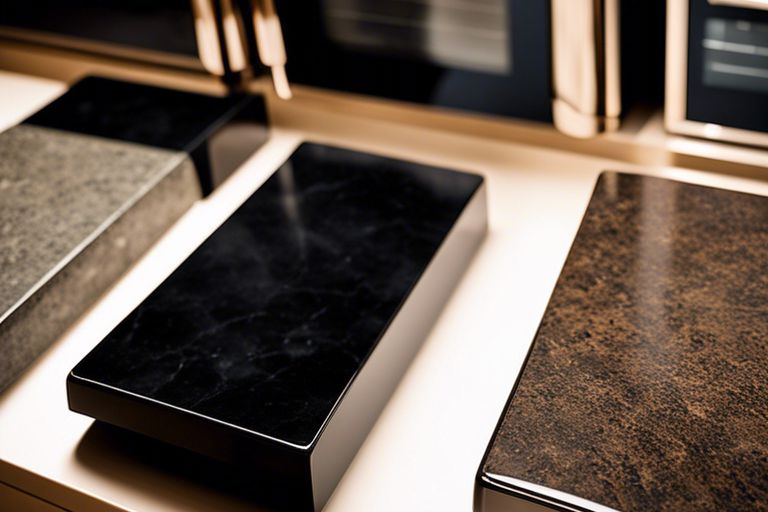
Characteristics of High-Grade Granite
Among the defining attributes of high-grade granite are its superior thickness, durability, and low porosity. Typically, slabs in this category measure at least 1 inch (25 mm) thick, providing a robust surface that is less prone to chipping, cracking, or staining. Additionally, due to their dense structure, high-grade granite options absorb significantly less moisture, which minimizes the need for frequent sealing and offers greater resistance to damage from liquids.
Moreover, high-grade granite is less likely to exhibit natural flaws such as pitting or fissures, guaranteeing that you receive a stone that not only looks exquisite but also withstands the rigors of daily use. These characteristics combine to create a product that not only elevates the design of your space but also serves as a long-lasting investment.
Unique Visual Features
Level-3 granite often boasts an array of unique visual traits that enhance its appeal. From vivid colors to intricate veining, high-grade granite options offer a distinct aesthetic that can serve as a focal point in any room. The stones available in this category are sourced from exotic locations, contributing to their remarkable appearance and rarity.
Further, the unique patterns and bold contrasts found in high-grade granite often change with the lighting throughout the day, providing a dynamic visual experience that can enhance the overall ambiance of your home. This unparalleled beauty is one of the primary reasons why many homeowners and designers opt for high-grade granite, ensuring their spaces not only look stunning but also remain timeless in style.
Investment Value
Features like its durability and aesthetic appeal make high-grade granite a wise investment for your property. When you select granite of this caliber, you are not merely purchasing a countertop; you are investing in a long-lasting feature that enhances your home’s value. High-grade granite is sought after in the real estate market, often driving up the resale value of your home due to its luxurious appearance and robust nature.
This investment also extends to your budget in the long run. While the initial cost of high-grade granite may be higher, its longevity and minimal maintenance requirements mean you will likely spend less over time on repairs or replacements compared to lower-grade options. Ultimately, your decision to choose high-grade granite can yield rewarding benefits for years to come.
Suitable Applications for High-End Projects
Projects involving high-end kitchens, lavish bathrooms, or luxury installations greatly benefit from the use of high-grade granite. The high-quality materials elevate the entire aesthetic of these spaces, providing a sophisticated touch that complements your overall design vision. Consider integrating high-grade granite into custom cabinetry, kitchen islands, or elaborate vanities to truly make your project stand out.
Value lies not only in the beauty of high-grade granite but also in its versatility and resilience, making it suitable for various applications in upscale settings. Whether you are creating a chef’s kitchen or a spa-like bathroom retreat, high-grade granite fulfills your needs for durability, elegance, and functionality, ensuring that your investment brings both style and substance to your home.
How Granite Grades Are Determined
While there is no universal industry standard for grading granite, certain factors help classify its grade. These include:
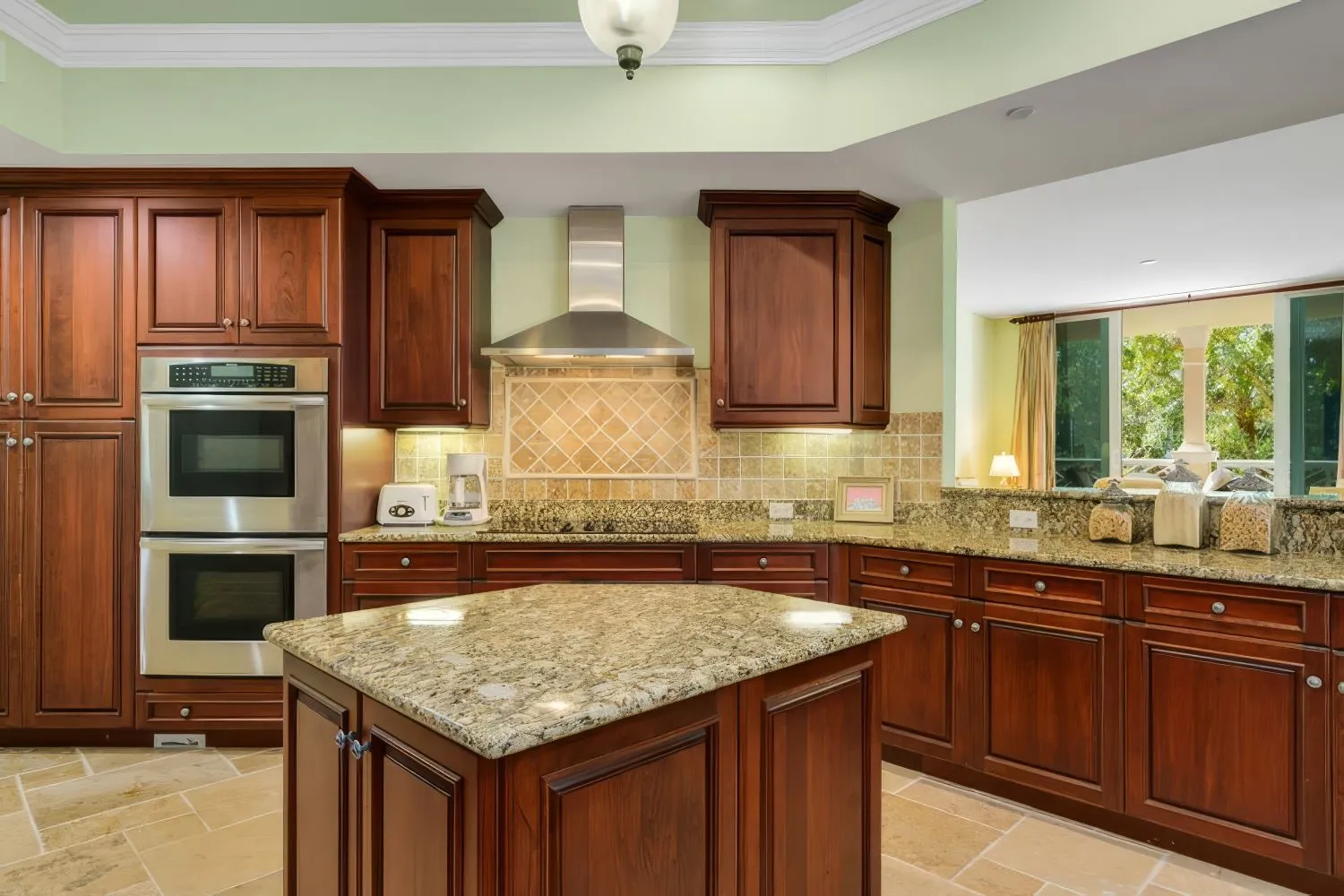
Visual Appearance
For granite, the richness of color and uniqueness of patterns can significantly enhance its appeal and value. High-grade granite often features bold colors, exotic patterns, and intricate veining that you won’t find in lower-grade options. This striking visual appearance is a major factor in its desirability and price, as unique hues and striking designs can transform your space dramatically.
Moreover, as you explore various options, be aware that low-grade granite typically presents simpler designs and colors with patterns that are less distinct. Choosing higher-grade granite not only adds elegance to your countertops but also increases the overall value of your home.
- The richness of color and the uniqueness of patterns can elevate the stone’s grade.
- Uncommon hues or intricate veining are often found in high-grade granite.
Origin
About the source of your granite, the geographic origin plays a substantial role in determining its grade. Granite from remote locations, especially those known for their exceptional quality, is often more valuable due to its rarity. Imported exotic stones can command higher prices partly because their origins imply specific characteristics that are coveted in high-end installations.
In contrast, domestically sourced granite may offer more accessible options without sacrificing quality. Choosing granite from reputable sources ensures that you are getting a product that meets your desired specifications and aesthetic requirements. Geographic factors can also affect the processing and transportation costs, which, in turn, influence the final price of your granite countertops.
- The geographic source of the granite can affect its cost and grade. Exotic stones imported from remote regions may be higher-grade due to their rarity.
Thickness
Origin thickness also plays a significant role in the quality assessment of granite. Generally, thicker slabs, usually around 3/4 inch (20 mm) or more, are officially recognized as higher quality due to their enhanced durability and resistance to wear. You will find that high-grade granite often comes in these thicker sizes, which contribute to their luxurious appeal and longevity.
Indeed, the thickness of a granite slab impacts not only its aesthetics but also its practical use in kitchens and bathrooms. Thicker slabs can withstand daily wear and tear, making them ideal for high-traffic areas.
- Thicker slabs are considered higher quality and more durable, contributing to their higher grade.
Porosity and Durability
Among the factors influencing granite grades, porosity and durability are key indicators of quality. High-grade granite typically exhibits low porosity, making it more resistant to stains and damage over time. As a result, this durability makes it an excellent choice for various applications, especially in busy households or commercial settings where countertops are subjected to frequent use.
Grades of granite with high durability and low porosity require less maintenance and can resist chips, stains, and moisture absorption better than lower grades. This means that you are making a long-term investment in your home when you choose higher-quality options.
- Low porosity and high resistance to chipping, staining, or cracking are hallmarks of higher-grade granite.
Pitting and Markings
Any imperfections in granite can affect both its strength and beauty. High-grade granite typically features fewer flaws, such as pitting or fissures, which enhances its durability and aesthetic appeal. When you’re assessing granite, it’s vital to carefully inspect the slab for any natural abnormalities that could impact your finished product.
And while some natural variations are expected and even desired in granite, excessive imperfections can diminish both its performance and visual appeal. By selecting a higher-grade option, you are more likely to obtain a stone with a flawless surface and design that fits seamlessly into your home.
- The presence of fewer natural imperfections, such as pits or fissures, indicates a higher quality stone.
Choosing the Right Granite
Since granite grading is not standardized across the industry, it is essential to work with a reputable dealer. Experienced retailers can provide guidance on selecting granite that suits your needs, whether you’re prioritizing aesthetics, durability, or budget. Be sure to inspect the slab in person to assess its quality and match it to your project’s requirements.
By understanding these details, you can make an informed decision and choose a granite grade that balances beauty, functionality, and cost for your specific project.
To Wrap Up / Conclusion
Following this guide on understanding granite countertop grades, you are now equipped with the knowledge to make informed decisions that align with your design aspirations and budget considerations. By recognizing the distinctions between low-grade, mid-grade, and high-grade granite, you can choose the right material that not only enhances the aesthetic appeal of your space but also withstands the test of time. Your selection process will become more streamlined as you consider factors such as visual appearance, thickness, and durability in relation to your project requirements.
As you navigate your options with Guilin Cabinets, take the time to explore different granite varieties and consult with knowledgeable professionals who can assist you in making the best choices for your remodeling project. Your investment in quality granite can significantly elevate the sophistication and functionality of your kitchen or bathroom, ensuring that your spaces reflect both style and longevity for years to come.
FAQs About Granite Countertop Grades: How Grades Are Determined
What are the different grades of granite countertops available at Guilin Cabinets?
At Guilin Cabinets, we offer three main grades of granite countertops: Low-Grade (Level-1), Mid-Grade (Level-2), and High-Grade (Level-3 and above). Low-grade granite is budget-friendly and basic in appearance, mid-grade offers a blend of affordability and quality with fair patterns and durability, while high-grade granite is a premium option featuring unique colors and intricate patterns, ideal for luxury installations.
How is the grade of granite determined at Guilin Cabinets?
The grade of granite is determined by several factors, including visual appearance, origin, thickness, porosity, durability, and the presence of natural imperfections. These aspects are assessed to provide an accurate classification of the granite’s quality and overall value.
What are the benefits of choosing high-grade granite countertops?
High-grade granite countertops offer several benefits, including unique and exotic colors, intricate veining patterns, superior durability, and low porosity, which makes them more resistant to stains and damage. They also contain fewer natural flaws, ensuring a luxurious finish for high-end applications.
Is low-grade granite suitable for kitchen countertops?
While low-grade granite can be used for kitchen countertops, it is better suited for budget projects, temporary installations, or rental properties. Due to its higher porosity and thinner size, it may require more maintenance and careful handling compared to mid- and high-grade options.
How thick are the granite slabs offered at Guilin Cabinets?
The thickness of granite slabs varies by grade. Low-grade granite slabs are typically around 3/8 inch (10 mm), mid-grade slabs are about 3/4 inch (20 mm), and high-grade slabs tend to be thicker, often exceeding 3/4 inch, providing increased durability and stability for countertops.
Can I inspect the granite slabs before making a purchase at Guilin Cabinets?
Yes, we encourage customers to inspect the granite slabs in person at our showroom. This allows you to assess the quality, appearance, and suitability of the granite for your specific project before making a decision.
Why is it important to choose a reputable dealer like Guilin Cabinets when selecting granite?
Choosing a reputable dealer ensures you receive high-quality products and expert guidance. At Guilin Cabinets, our experienced team can help you navigate the different grades of granite, ensuring you make an informed choice that meets both your aesthetic and budgetary needs.


